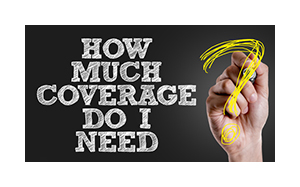Basics of Life Insurance
Are you considering a life insurance policy? Review these life insurance basics which can help you get started as you examine the many options available to you.
Life Insurance Defined
A life insurance policy is a contract between a policyholder and an insurance carrier. Most life insurance policies have four parts:• Premium payments – What the insured gives to the insurance carrier
• Death benefit – A sum of money the insurance carrier pays to beneficiaries upon the insured’s death
• Cash value – An interest-bearing savings or investment value that’s included in permanent life insurance policies
• Term period – How long the policy provides coverage for
Most life insurance policies require medical underwriting, some policies require financial underwriting. On the medical underwriting side, the potential insured will have to undergo a medical checkup.
Beneficiaries:>A beneficiary is the person or entity you name to receive your death benefit. Beneficiaries are often spouses, children and other family members, but you can name a friend or even a charity. Usually you will be asked to name a secondary or contingent beneficiary to be next in line to receive your benefit if your first beneficiary dies before you.
The video below discusses the basics of life insurance.
What Kinds of Life Insurance are Available?
There are many types of life insurance, with primary types including whole life, term life, universal life, indexed universal life, and variable life.With Whole Life Insurance, you will generally make level (equal) premium payments for life. The death benefit and cash value are predetermined and guaranteed but the guarantee is subject to claims paying ability of the issuing company. Whole life insurance can provide coverage for a set period as well as your lifetime. After purchase of the policy, all you need to maintain your policy is pay the fixed premium. Depending upon the specifics of your contract, your cash value may be accessible via policy loans or withdrawals. However, this can affect the cash value, death benefit, and even policy guarantees the insurance company gives.
With Universal Life Insurance, you may pay premiums at any time, in any amount (subject to certain limits), as long as the policy expenses and the cost of insurance coverage are met. The amount of insurance coverage can be changed. In addition, the cash value will grow at a declared interest rate, which may vary over time. The cash value may be accessed via policy loans or withdrawals. But it can affect the cash value, death benefit, and policy guarantees.
An Indexed Universal Life Insurance policy gives the policyholder a choice of allocating cash value amounts to a fixed account or a fixed-index account. You can pay premiums at any time, in almost any amount subject to certain limits, so long as the policy expenses and insurance coverage cost are met. The amount of insurance coverage can be changed. The cash value will grow at an interest rate declared annually and based on the performance of a stock index, which may vary over time. If there are any negative index changes, your cash value is protected. In these ways, it is similar to how a fixed index annuity functions: growth potential linked to rising index values and protection in the case of falling index values. Indexed universal insurance policies typically guarantee the principal amount in the indexed portion, but cap the maximum return that a policyholder can receive. Sometimes described as a hybrid universal life insurance policy, they tend to be inexpensive and offer greater safety than an average variable universal life insurance policy, but their growth potential is limited compared to variable options.
Term insurance will last a specified amount of time based on a set period. Time periods usually last for 10-30 years, with a 20-year period being the most common. If you were to purchase a 20-year term policy, it would last for 20 years. If the policy owner passed away within the 20-year term, the death benefit would be paid to the beneficiary. If the policy owner was to decease after the 20-year term, there would be no death benefit. The premium payments are at a very low cost and there is no cash value. You are purely purchasing for the death benefit only. There is also (ROP) Return of Premium Term Life Insurance which comes at a much higher cost.
With Variable Life Insurance, you pay a level premium for life. However, neither the death benefit nor cash value is predetermined or guaranteed. They fluctuate depending on the performance of investments in what are known as subaccounts. A subaccount is a pool of investor funds professionally managed to pursue a stated investment objective. You select the subaccounts in which the cash value should be allocated.
Why Get Life Insurance?
People generally take out life insurance policies for four reasons:• In order to supplement income for loved ones upon death
• Attaining tax advantages
• In order to put money away for retirement
• Attaining resources for emergencies, retirement, or other needs
The video below can show you some of the various tax advantages of life insurance.

How Much Coverage Do I Need?
The provided calculator can help you to determine how long insurance coverage that you are considering can last. You should consult with a qualified, licensed, professional life insurance agent on these matters before making a decision and address these various considerations:• In order to supplement income for loved ones upon death
• Attaining tax advantages
• In order to put money away for retirement
• Attaining resources for emergencies, retirement, or other needs
The calculator below can help you determine how long the proceeds from your life insurance policy will last.
Permanent VS Temporary Insurance
Permanent coverage may bring more value to a person that has good cash flow as it is significantly more expensive than a term policy. This type of coverage is a way for you to save as well as leverage wealth. A permanent policy builds up value as you grow older; it is more flexible than term life and can change according to your needs. Temporary or Term policies last a certain period of time and must be renewed or replaced in order to continue. If you are unable to afford a permanent policy and have a temporary need, for example you may have a greater need for insurance and not much in the way of a budget for insurance when your children are young.
Can the right life insurance policy help you meet your retirement savings goals?
The best approach depends upon your individual circumstances which can change over time. For individuals with a high net worth, the benefits of permanent life insurance that accumulates cash value could be a sensible part of your retirement plan. If you have a young family, your strategy may be to get the right death benefit for your family at the lowest cost so you have the most money left over to take other key steps toward financial security. Download the Life Insurance Guide Now and learn more about the various life insurance options available to you that can help you achieve your goals.Additional Articles:
It’s Time to Review Your Life InsuranceAvoid Mistakes When Buying Life Insurance
Term Life Insurance: Advantages And Disadvantages
Selecting The Right Beneficiary








